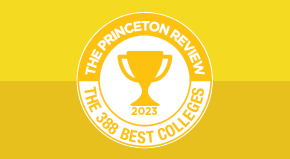
Presented by CommonBond
If your financial aid package doesn’t offer enough in scholarships or grants, and if your savings won’t cover all your college costs, student loans can make up the difference. But with so many options—subsidized loans, unsubsidized loans, parent PLUS loans, cosigned loans—you might be feeling overwhelmed. When considering your student loan options, these four considerations can help you make the best choice for your situation.
1. Federal loans offer unique benefits, to a point.
Federal direct loans are typically the lowest-cost borrowing option for college, but they have a hard cap on how much each student can take out. Direct loans have low fixed interest rates—as of July 2021, 3.73% for undergrads—and your credit isn’t considered when you apply. This is great for young adults who may have no credit history, as it means no cosigner is required. (Disbursement fees are low, too.)
Federal loans offer three benefits that private loans do not. If your earnings after graduation aren’t enough to make payments on the standard 10-year repayment plan, you can enroll in an income-driven repayment plan that adjusts your monthly payments based on your earnings and forgives any remaining balance after 20 or 25 years. Alternatively, if you work certain public service jobs, you can get your remaining loan balance forgiven after 10 years. And if you qualify for need-based federal loans, you won’t pay the interest that would normally accrue during school.
Loan features that reduce your payments to keep you from falling behind do have consequences. You may pay more interest in the long run, and forgiven student loan debt is considered income, and is therefore taxable.
With their low fixed interest rates, easy qualification, and many benefits, independent financial experts typically recommend maxing out your federal direct loans before turning to private loans.
2. Federal loans may not be enough.
Because federal loans have annual and overall borrowing limits, they aren’t always enough to make up the difference between a student’s savings, financial aid, and the cost of attendance. When they aren’t, parent PLUS loans or private student loans can bridge the gap.
As a college freshman, you can’t borrow more than $5,500 in direct loans (or $9,500 if you’re not a dependent or your parents can’t obtain a PLUS loan to help you). The maximum you can borrow in direct loans to finance your entire undergraduate degree is $31,000 (or $57,000 for independent borrowers).
If you need more, your parent can apply for a Parent PLUS loan, which requires a credit check and has a higher interest rate. Parent PLUS loans charge a fixed interest rate of 6.28% and have a loan disbursement fee of 4.228% for the 2021–22 school year. You can also turn to private loans instead of or in addition to Parent PLUS loans. Both let you borrow up to 100% of the cost of attendance.
3. Private loans may offer lower interest rates and more savings.
Students who have a parent with good credit who is willing to cosign may find lower fixed or variable rates than those from the PLUS loans with a private lender such as CommonBond.
With private student loans, interest rates depend on the student’s and cosigner’s credit scores, the loan repayment period, and the choice of a fixed or variable loan. In addition, private lenders, including CommonBond, often have no disbursement fees. (By contrast, the PLUS loan’s disbursement fee on a $10,000 loan would be $422.80.)
Many private lenders also offer protections like forbearance, quick cosigner release, and grace period after graduation.
4. Cosigning is a serious commitment.
A cosigner can help a student, especially a college freshman, get a good rate on their loan. And when payments are made on time, both parties can see their credit scores go up.
Cosigning is not something to agree to lightly, though. If the primary borrower—the student—stops making payments, the cosigner must take over.
If the cosigner doesn’t take over, both borrowers can see their credit scores suffer. In addition, late fees and additional interest may accrue on the unpaid balance.
Problems with loan repayment could also hurt the relationship between the borrower and cosigner. But borrowing together can also strengthen relationships and create opportunities for conversations and lessons about managing money wisely that might not happen otherwise.
Some private lenders will release a borrower’s cosigner after a steady history of on-time payments. Additional requirements will likely include the borrower’s having graduated from school and having strong enough credit to qualify for the loan without the cosigner.
Ready to take the next step toward borrowing for college?
CommonBond, which has sponsored this article, is a fintech company that provides support and access to both the loan application process as well as student loan calculators. They also connect borrowers with a free Money Mentor who can offer customized guidance by text message on topics such as creating a budget, submitting the FAFSA, finding internships, mapping majors to career pathways, responsibly building credit and more. Additionally, they offer flexible in-school payment options, a six-month grace period after graduation, forbearance, and cosigner release. Click here to see if their undergraduate student loan program can help make your college dreams a reality.
Offered terms are subject to change and state law restrictions. Loans are offered through CommonBond Lending, LLC (NMLS #1175900). CommonBond is not affiliated with the school you attended or are attending.
Read More
Explore Colleges For You
Connect with our featured colleges to find schools that both match your interests and are looking for students like you.
Get Started on Athletic Scholarships & Recruiting!
Join athletes who were discovered, recruited & often received scholarships after connecting with NCSA's 42,000 strong network of coaches.
Best 388 Colleges
154,000 students rate everything from their professors to their campus social scene.



